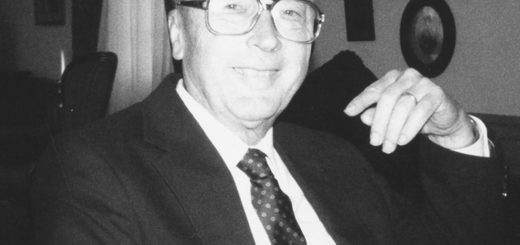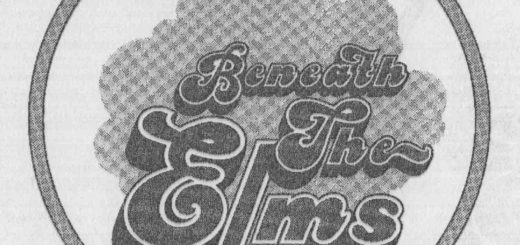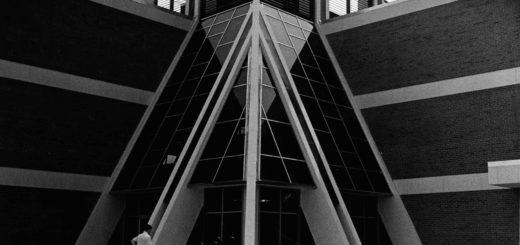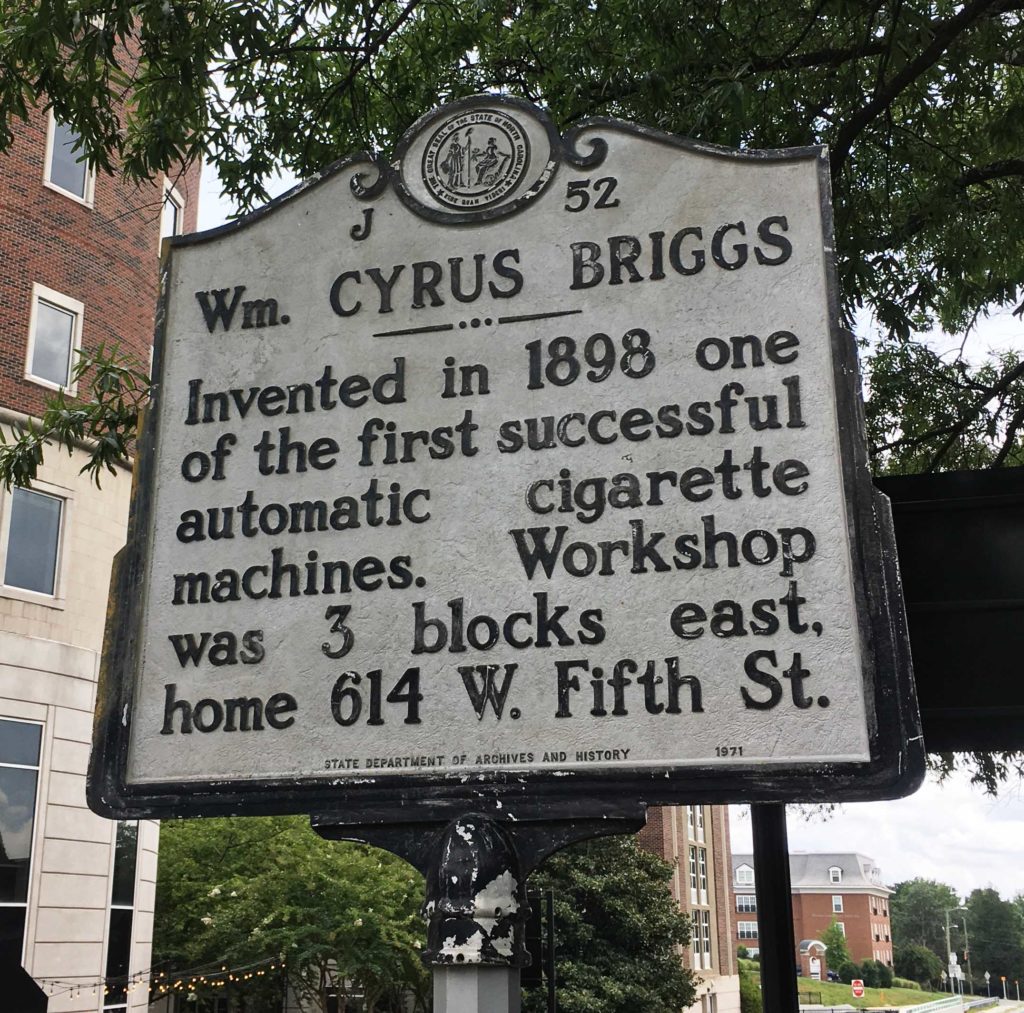
If you’ve driven on North Main Street, crossing West First Street, you’ve probably noticed the North Carolina Highway Marker on the southwest corner of North Main Street. The marker is shown in the photo above.
The marker was installed at its North Main Street location in 1960. The recommendation for the marker came from Mrs. Mable Loring (Thomas Jefferson) Byerly, the daughter of William Cyrus Briggs.
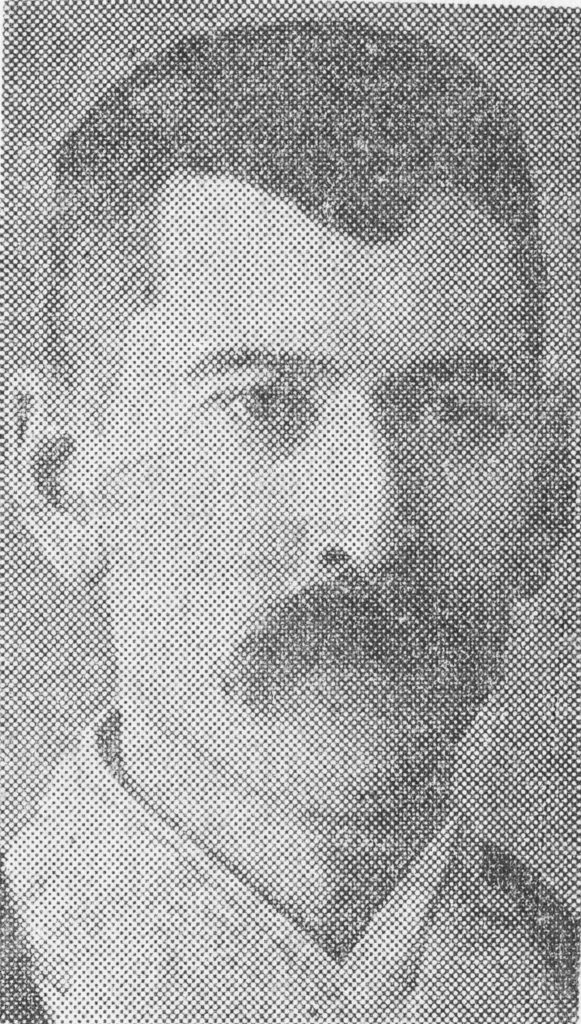
William Cyrus Briggs was born in Maine in 1861, to Cyrus and Lydia Briggs. He was an engineer and a machinist. He moved to Brooklyn, then he moved to Fayetteville, where he designed a cigarette-making machine. James R. Williams, of Fayetteville, persuaded Briggs to take his invention to Winston, a tobacco-manufacturing city.
Briggs moved to Winston in 1892. He and Williams soon obtained the backing of Colonel Frances Fries, Dr. W. T. Brown, William F. Shaffner, and Henry P. Shaffner, for the development of the machine.
Briggs established his workshop in a corner of the J. A. Vance Machine Shops at the corner of First and Chestnut Streets (as mentioned on the marker). This was the beginning of the business known as Briggs-Shaffner Company. The company was located on Brookstown Avenue. He perfected his machine in 1898 to produce 300,000 cigarettes a day. Hand-rollers produced 2.500 cigarettes a day. Producing such a large quantity of cigarettes helped R. J. Reynolds Tobacco Company compete with James Buchanan Duke and his American Tobacco Company.
Briggs visited the Murai Brothers in Kyoto, Japan in 1898. After this visit, Briggs sold the cigarette machine and patents to the Murai Brothers. The United Cigarette Machine Company of Lynchburg, Virginia, sued Briggs for patent infringement. Colonel Clement Manly of Winston-Salem successfully defended Briggs when the case was tried in Asheville. Captain James W. Gerow, president of the United Cigarette Company, offered Briggs a position in his company.
Apparently Gerow made the offer to Briggs every year because Briggs’ machine was the major competition for Gerow’s Bonsack machine in the cigarette field. According to Brigg’s other daughter, (Hope Elizabeth Briggs) Briggs left Winston-Salem in 1913 due to a personality conflict with another member of his firm, rather than a business offer.
Briggs designed an entirely new cigarette machine at United with a capacity of 400,000 a day. The machine was named “Perfection.”
Briggs is also credited with the invention of the first return carriage for a typewriter and for a stamp vending machine. The stamp vending machine was patented in 1909.
William Cyrus Briggs died in 1918 in Lynchburg, where he was buried. Later that year his remains were removed to a family grave site in Maine. Briggs was married to Hope Elizabeth O’Brien. They had three daughters and one son.
Photographs courtesy of Forsyth County Public Library Photograph Collection.


